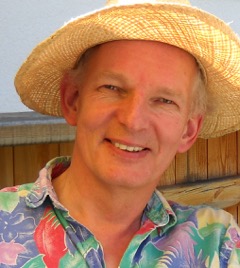

Speaker Josef Nordmann
Relevant psychological processes in matrix-rhythm therapy and proper conditions of setting are needed to regulate oneself, this Josef Nordmann will address in his presentation on “self-regulation”.

Josef Nordmann
Josef Nordmann, Clinical psychologist MSc (University of Münster, Germany), lives in Weyregg, Austria. He offers body oriented psychotherapy and individual counselling.
He started in therapy for children and adolescents in a therapeutic community setting, with a minimal drug model and Jungian orientation. Body oriented group therapy training. Today he mainly works as an individual counsellor and offers supervision in the context of his studies of Tibetan Buddhism. Research focus: practical application of meditation. Link between psychology and spirituality, mainly of Buddhism and Sufism.
His approach is the Humanistic framework, Carl Rogers, the Initiatory Therapy of Dürckheim / Hippius and the Hakomi Method of Ron Kurtz, also known as Loving Presence model.
Relevant psychological processes in matrix-rhythm therapy and proper conditions of setting are needed to regulate oneself, this he will address in his presentation on “self-regulation”.
Mr. Nordmann, what is your connection to Matrix Rhythm Therapy?
Matrix rhythm therapy is interesting for me because in psychotherapy during the 20th century we already had body therapy pioneers, such as Elsa Gindler in Berlin, Dr. Wilhelm Reich in Vienna, Dr. Ida Rolf, Count Karlfried Dürckheim in Germany, and others. Here, the goal was and is to involve the body in the therapy to enable deep release (reset) of problematic somatic structures. This will restore a free flow of vitality and health. And that is also a concern of Matrix Rhythm Therapy, which comes from cell biology research.
Dr. Ulrich Randoll and I discovered that we both have a strong interest in the systemic process view and the principles of self-organization – and how biological rhythms work to make mental patterns flexible again. In short, the interaction of body and mental condition for the sake of health from a holistic perspective, that’s a key point.
Further, I have been following the work of music therapist Dr. Oruç Güvenç. He has revived the healing tradition of Central Asia, which is little known in Europe, for more than 40 years. There is a connection here, which is also very important to me, about the rhythm and healing quality of the music, with vital rhythms to honour the whole person.
Mr. Nordmann, what else can you tell us about the contents of your lecture on self-regulation?
When the Matrix Rhythm Therapist delivers the best quality, he is simply present – mentally and emotionally balanced. This presence is an all encompassing state that can last. Then he does not have to make an effort, but provides the patient with top attention. The body opens up, if one is accordingly kind and compassionate. Of course you can not always do that. We vary in our personal capacity and effectiveness sometimes, right? And that effects the treatment quality. That’s why body-oriented therapy trains in loving presence, how to be compassionately present.
Self-regulation deals with the question of what role do mental processes play in the somatic healing processes of matrix-rhythm therapy. Taking into account the physiological view, I will discuss how one can come to regulation? What conditions may be needed to really promote good health? In this view, it is always about a synopsis, a coherence of psychological experience and physical experience.
What is important to you personally?
Surprisingly today, the natural sciences are more and more concerned with the topic of consciousness. This is not their typical topic per sé, actually it seems to be a mental or psychological research area. High-level consciousness is an outstanding human quality.
The spiritual has priority to me. Even if I use matrix rhythm therapy. If my mental state is not right, can applying the Matrixmobil work well? Interestingly, this time you have invited a delegation of participants from India. In India, Sri Aurobindo (20th century) has proposed the integration of human-spiritual faculties as a supramental consciousness being the necessary task of our modern age.
It is important to us that we not only treat the body with Matrix Rhythm Therapy, but also consider the state of consciousness as an important factor in the treatment.
Incidentally, India has for years been trying to change WHO’s health definition into a four-dimensional definition. Right now a three-dimensional one is accepted. Health is defined by body, mind and social behaviour. The spiritual dimension of experience is omitted here. But because it’s not that easy to measure, it’s not easily scientifically recognized.
In Europe, fortunately, there is the tradition of naturopathy. Yet there are only a few who are truly recognized here. In Essen, Germany for example, there is the Knappschaftskrankenhaus with the Mind-Body-Medicine. For example, if you have a gastric ulcer, the doctor may prescribe Tai Chi, a sensitive movement exercise. Or the Carl Carstens Foundation, also in Essen, documents studies in natural medicine. We do not want to forget to mention the TCM clinic in Bad Kroetzing.
Did you know that billions are being spent by the governmental health institute NIH in the United States on research into so-called CAM (Complementary Alternative Medicine)? The trend is clearly there, also because the “other” medicine, pharmaceutical medicine, is not affordable, an economic problem – and I am happy about this development.
Contact:

